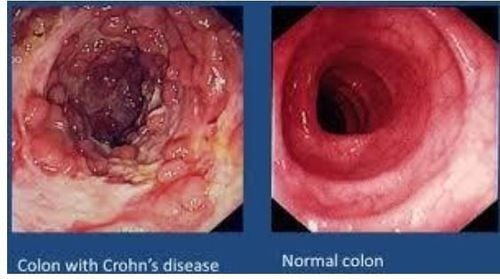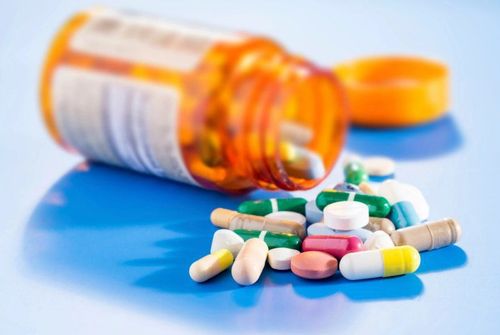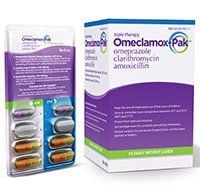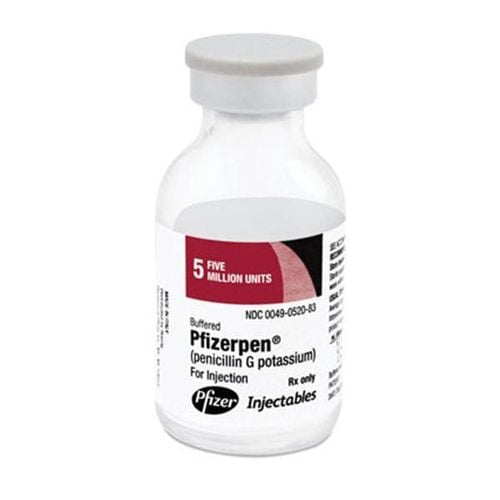This is an automatically translated article.
Cefadroxil 1g is used mainly to treat infections caused by susceptible strains of bacteria. During the course of taking Cefadroxil 1g, patients should strictly follow the instructions recommended by the doctor to achieve optimal effectiveness and avoid experiencing adverse side effects.
1. What is cefadroxil 1g?
Cefadroxil 1g is a prescription antibiotic, used to treat sore throats, urinary tract infections, pleurisy, ... in both children and adults. Cefadroxil 1g is a product of TW2 Pharmaceutical Joint Stock Company - Vietnam, made in the form of tablets with packing specifications of 10 blisters x 10 tablets.
Each Cefadroxil tablet contains the following pharmaceutical ingredients:
Main active ingredient: Cefadroxil anhydrous (in the form of Cefadroxil monohydrate) content of 1g. Other excipients: Lactose, tapioca starch, colloidal magnesium stearate silicon dioxide, talc powder and povidon. The main active ingredient Cefadroxil belongs to the 1st generation cephalosporin group, which has the ability to kill bacteria by blocking the synthesis of bacterial cells. Cefadroxil is commonly used to treat bacterial infections, but is not effective for viral infections, such as the common cold or flu.
2. What are the effects of Cefadroxil 1g?
2.1 Uses of the drug Cefadroxil 1g Respiratory: Pharyngitis, acute / chronic bronchitis, bronchopneumonia, tonsillitis, hydropneumonia, empyema, lung abscess, laryngitis, sinusitis and otitis media. Treatment of urinary tract infections: Cystitis, gynecological infections, acute or chronic pyelonephritis, urethritis. Treatment of skin and soft tissue infections: Ulcers caused by lying down, pyoderma, boils, mastitis, areola, abscess or lymphadenitis. Treatment of certain other infections: Septic arthritis or osteomyelitis. 2.2 Contraindication to Cefadroxil 1g Do not use Cefadroxil 1g in the following cases:
Patients with allergies or hypersensitivity to the active ingredient Cefadroxil, antibiotics, Cephalosporin, Penicillin or any other ingredients contained in the drug. Relatively contraindicated for pregnant or breastfeeding women. If you must use Cefadroxil 1g, you should consult your doctor carefully.
3. Dosage and how to use Cefadroxil 1g
3.1 Dosage of Cefadroxil 1g Dosage of Cefadroxil 1g for children and adults > 40kg
Oral dose from 500mg - 1g / day, divided into 2 times / day depending on the degree of infection. Patients treated for uncomplicated urinary tract infections or skin and soft tissue infections should take 1g once daily. Cefadroxil dose 1g for children > 6 years old and the elderly:
Oral dose of 500mg / day and divided into 2 times / day. Elderly patients requiring impaired renal function should be checked before using the drug. This subject may receive an initial oral dose of 500-1000 ng, then adjust the dose based on creatinine clearance. For clearances of 0 – 10ml/min, oral doses of 500 – 1000mg with a minimum interval of 36 hours between 2 doses. For a clearance of 11-25ml/min, oral doses of 500-1000mg with a minimum 24-hour interval between 2 doses. If clearance is 26 - 50 ml/min, oral dose of 500 - 1000 mg with a minimum interval of 12 hours between 2 doses. During the use of Cefadroxil 1g, patients need to maintain treatment for a minimum of 5 to 10 days to achieve the planned results.
3.2 Instructions for proper use of Cefadroxil 1g Cefadroxil 1g is made in the form of tablets, so patients need to take it orally. Before and during the treatment of infections with Cefadroxil 1g, patients should carefully read the instructions for use and follow the instructions on the dosage and duration of medication recommended by the specialist.
3.3 Treatment of overdose of Cefadroxil 1g When taking more than the prescribed number of doses of Cefadroxil 1g can lead to acute symptoms such as diarrhea, nausea, vomiting, hyperreflexia or convulsions, especially in renal failure patients. To solve the overdose of Cefadroxil 1g, the doctor may recommend the patient to perform the following methods:
Hemodialysis to remove the drug that has not been excreted from the blood, however the method This is rarely indicated in cases of overdose. Respiratory protection, fluid administration and supportive ventilation for patients with an overdose of Cefadroxil 1g. Apply supportive measures or manage symptoms after gastrointestinal cleansing or lavage.
4. Possible side effects when using Cefadroxil 1g
During the treatment of bacterial infections with Cefadroxil 1g, patients may experience the following undesirable side effects:
Allergic reactions such as swelling of the lips, face, tongue, and throat; rash or trouble breathing. Diarrhea with blood. Unusual bruising/bleeding. Body aches, fever, chills, flu symptoms. Convulsions. Dark urine, jaundice, pale skin, confusion or weakness. Swollen glands, joint pain or general weakness. Severe blistering, peeling, or red rash on the skin. Extreme thirst, loss of appetite, shortness of breath, weight gain, or urinating less than usual. Muscle spasms or stiffness. Stomach pain. Nausea, vomiting. Mild itching. Discomfort in the mouth or unusual taste. Vaginal discharge or itching. When any of the side effects mentioned above occur, the patient should immediately contact the doctor in charge of treatment for specific treatment.
5. Precautions to take when taking Cefadroxil 1g
5.1 General notes when treating with Cefadroxil 1g The following are things that patients need to be very careful about during the use of Cefadroxil 1g, including:
Use caution in patients with a history of allergies with penicillin due to cross-sensitivity reactions between antibiotics of the beta lactam group. Cefadroxil should be used with caution in patients with renal impairment. It is best to closely monitor the patient's clinical and renal function before and during treatment. If long-term use of Cefadroxil 1g is required, the patient should be carefully monitored and the drug should be discontinued immediately in the event of a superinfection. Patients with digestive problems, such as colitis or severe diarrhea, should use caution when taking Cefadroxil 1g. There are limited safety data on the use of Cefadroxil in neonates and premature infants, so caution should be exercised when administering the drug to these populations. Be especially careful when using Cefadroxil emulsion for infants because the amount of sodium benzoate in the drug can cause toxicity. 5.2 Interactions of the drug Cefadroxil 1g with other drugs of Cefadroxil 1g in the intestine. Probenecid may decrease the effect and excretion of Cefadroxil. Aminoglycoside drugs or Furosemide can occur synergistically to increase nephrotoxicity when combined with Cefadroxil 1g. Drugs that cause uricuria may increase the effect of Cefadroxil when used in combination. Vaccine - typhoid vaccine will be reduced effectiveness if used with Cefadroxil 1g. Cefadroxil 1g is mainly used to treat infections caused by susceptible strains of bacteria. To ensure the effectiveness of treatment and avoid unwanted side effects, patients need to strictly follow the instructions of the doctor, professional pharmacist.
Follow Vinmec International General Hospital website to get more health, nutrition and beauty information to protect the health of yourself and your loved ones in your family.
Please dial HOTLINE for more information or register for an appointment HERE. Download MyVinmec app to make appointments faster and to manage your bookings easily.













